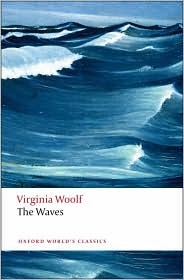 Micheline Aharonian Marcom once said to me that books teach you how to read them, and though I was lost when I opened The Waves by Virginia Woolf, I fumbled onward until, as Miłosz would have said, “I surrendered and it carried me and I swam.” As the best books will do, this book challenged me as a reader and writer and made me think hard about my own life.
Micheline Aharonian Marcom once said to me that books teach you how to read them, and though I was lost when I opened The Waves by Virginia Woolf, I fumbled onward until, as Miłosz would have said, “I surrendered and it carried me and I swam.” As the best books will do, this book challenged me as a reader and writer and made me think hard about my own life.
The Structure of Interspersion
The book is starts with a short poetic passage in italics which describes the dawning of the day at the edge of the sea.
The sun had not yet risen. The sea was indistinguishable from the sky, except that the sea was slightly creased as if a cloth had wrinkles in it.
Additional italicized sections serve as markers of the passing day (and lifetime) throughout the book. It’s perhaps an obvious analogy and one I’ve used myself, but Woolf handles it beautifully. Without the passing time denoted in these passages, I would have had a more difficult time understanding what was happening with the rest of the text.
The space between those italic sections, the bulk of the book, initially looks like a dialogue:
“I see a ring,” said Bernard, “hanging above me. It quivers and hangs in a loop of light.”
“I see a slab of pale yellow,” said Susan, “spreading away until it meets a purple stripe.”
“I hear a sound,” said Rhoda, “cheep, chirp; cheep, chirp; going up and down.”
But it quickly becomes evident this is something different than ordinary dialogue. Though there is often more than one speaker and their words build on each other, they are not interacting with each other. At first I wasn’t sure if the characters were even speaking aloud, but once I was entranced by them it ceased to matter.
This creates an effect similar to a classical Greek chorus because it conveys a unity of experience, but the characters do not speak in unison. Instead, each contributes a slightly individual perspective which allows us to see the other characters through their eyes. This variance is important because there is no other exposition. The entire story is told in these weirdly interwoven monologues.
The Closeness of Interior Monologues
Though it took me awhile to get into the spirit of this book, it knocked me on my writing ass. In my new book, I’ve challenged myself to work in third person. Reading Woolf’s dialogues (which often come off as interior monologues) I am reminded how very much exposition can come from the self-exploration of first person. Whether to include sections in first person is something I’ll be carefully considering as I revise for structure. The other thing I will be looking at, again influenced by Woolf, is the way two completely separate narratives feed off of one another to tell one story.
Creating a Sense of Belonging
Woolf has found a way of conveying the depth of friendship. As I followed Bernard, Susan, and friends through the moments from a childhood classroom to a restaurant in young adulthood and beyond as their progressing lives intersect, the enormity of their shared experience became intoxicating. The choral speaking felt as though they were only truly whole when they were together in body or spirit.
Friends like these are the people who who know and accept you for all that you are. In my life, I have been lucky enough to be part of more than one group like this. Though my introversion requires long spaces of solitude, those moments of true kinship and understanding are unequalable. I’m thinking back to a recent night with writer friends when we said what we really thought and finished each other’s sentences. I knew how important this is one-on-one (as in a marriage), but I don’t think I realized how deeply important and satisfying this kind of friend group is until I experienced it through Woolf’s strange and bewitching narrative.
What have you read lately that challenged you as a reader, writer, and person?
If this review made you want to read the book, pick up a copy of The Waves from Bookshop.org. Your purchase keeps indie booksellers in business and I receive a commission.